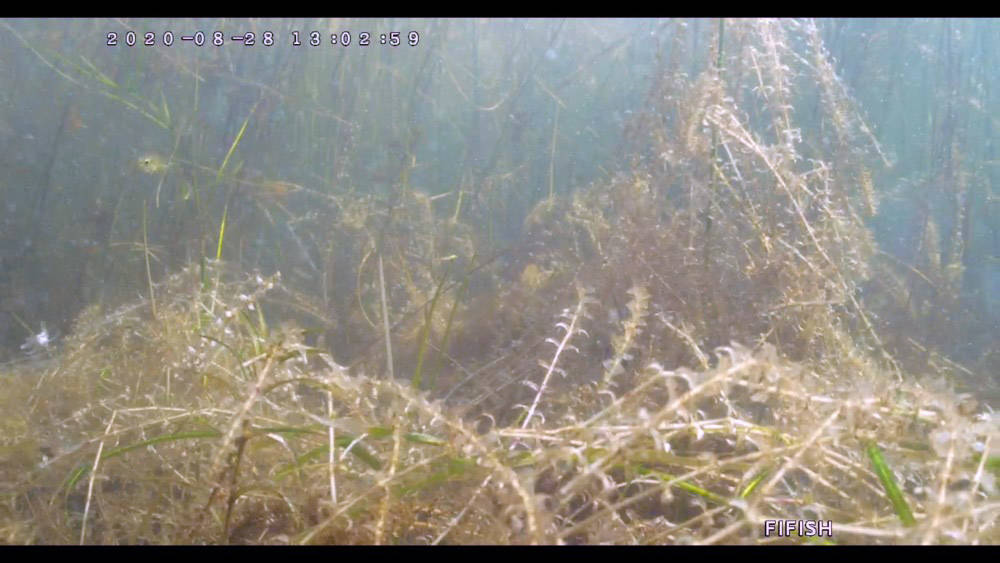While some planned projects at the Kenai National Wildlife Refuge were put on hold in summer 2020 due the pandemic, we in the refuge’s biology staff prioritized management of non-native species above other field work.
Since 2005, when our biology staff at Kenai National Wildlife Refuge began conducting non-native species surveys, this kind of work has become an increasingly large part of what we do. In this article I provide updates on the refuge’s non-native species management efforts leading up to the present and plans for dealing with non-native species in 2021.
The Alaska Department of Fish & Game has been systematically eradicating all known populations of invasive northern pike from the Kenai Peninsula, beginning in 2008 at Arc Lake and culminating in 2018 with removal of pike from the Tote Road lakes. For a brief time, we thought that northern pike had been completely removed from the peninsula.
In 2018, northern pike were reported at remote Vogel Lake in the Miller Creek drainage near Point Possession, and their presence was confirmed in 2019. Since then, ADF&G, the refuge and Kenai Watershed Forum have been investigating this drainage and planning for the possibility of eradicating this last known population in fall of 2021.
For more information and photos see the project’s recent blog post at bit.ly/3cUX8kD. Comments on the draft environmental assessment (available at bit.ly/3dALRVQ) can be sent to Ben Wishnek (benyamin_wishnek@fws.gov or C/O: Kenai NWR, P.O. Box 2139, Soldotna, AK 99669) through April 17.
In a strangely parallel narrative, we at the refuge had been working with others to completely eradicate the aquatic invasive plant elodea from the Kenai Peninsula since its discovery in Stormy Lake in 2012. After successful removal of the last population in Hilda-Seppu Lake in Nikiski ending in summer 2019, we had hoped that we were done.
In September 2019, Rob Massengill of ADF&G, while he was checking for pike in bodies of water around Vogel Lake, found elodea in Sandpiper Lake. In August 2020 we were able to fly out to Sandpiper Lake and begin treatment.
When we returned a couple of weeks later, we saw that elodea treated with contact herbicide had already become yellow and brittle. We expect to have this population eradicated by 2022 to 2023.
In 2020, crews from the Alaska Center for Conservation Science and the refuge surveyed weeds in much of the 2019 Swan Lake Fire. With all of the soil disturbance and moving around of equipment that took place during fire suppression and repair activities, there was great potential to move exotic weeds into otherwise weed-free habitat.
Thankfully, we found few non-native weeds in the fire area that had not already been there along roads, power lines and trails. We did find a couple of non-native species that had not been recorded on the refuge before (redroot pigweed and purslane speedwell), but we do not expect them to move beyond trails and roads.
Informed by the weed surveys, our biology staff strategically sprayed or otherwise controlled non-native plants along roadsides, parking areas and trailheads to keep weeds from spreading into the relatively weed-free interior of the refuge.
While surveying weeds in the fire, the ACCS crew discovered a large infestation of water forget-me-nots along the Kenai River near Surprise Creek. Although this aquatic relative of our native forget-me-nots had been recorded from farther up the Kenai River in Cooper Landing, we had not seen it on the refuge.
The infestation at Surprise Creek is now the largest known infestation of water forget-me-nots in Alaska! We do not know how this species may affect the Kenai River system.
Gino Graziano of University of Alaska Fairbanks Cooperative Extension, while recreating on the Swan Lake Canoe Route in 2020, reported invasive reed canarygrass from Canoe Lake #2.
I think that this was the first time that reed canarygrass had been found off of the road system on the refuge. We suspect that it was brought there by canoe or kayak because what looks like the original infestation is at a portage.
Follow-up trips out to the vicinity revealed that this was just part of a much larger infestation along three connected lakes and Sucker Creek.
We are concerned that, if reed canarygrass is allowed to persist and spread down Sucker Creek to the Swanson River, it could degrade these productive salmon streams. Potential treatment of this population is yet to be determined.
Gino also reported cattails from remote Moosehorn Lake on the Swan Lake Canoe Route. There has been some debate about whether cattails are native in our area or not, but my current understanding is that, like pike, they are native to Interior but not Southcentral Alaska.
Cattails were not reported during a survey of Moosehorn Lake in 1986, so they appear to have arrived there recently.
Locally, cattails are already growing in drainage ponds in Soldotna and at a lake in Nikiski, where they were introduced.
From what I have seen, cattails can act like invasive species here, growing aggressively and displacing other shoreline vegetation. I would like to have a look at the Moosehorn Lake cattails in 2021.
In 2020, even though we had to forego some of our planned projects, I am grateful that we were able to get non-native species work done.
I believe that our choices of what to do (or not do) about non-native species now will partly determine the future appearance and character of the Kenai Peninsula, the quality of life for the peninsula’s residents and the set of choices that will be available down the road.
Matt Bowser serves as Fish and Wildlife Biologist at Kenai National Wildlife Refuge. Find more Refuge Notebook articles (1999–present) at https://www.fws.gov/refuge/Kenai/community/refuge_notebook.html.

